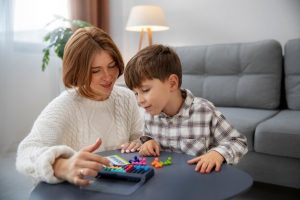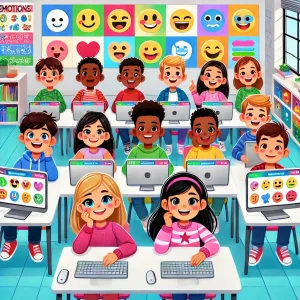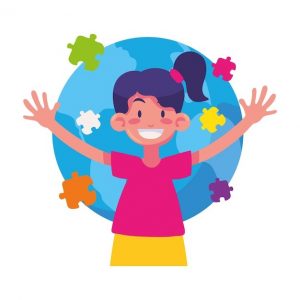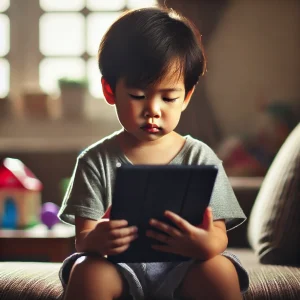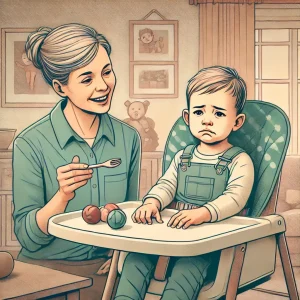How Behavioral Therapy Helps Kids with ADHD
By Wellness Hub
Last Updated: July 16, 2024
Is your child often restless, easily distracted, or facing challenges in managing impulses? These could be signs of ADHD—a prevalent condition that impacts numerous children, affecting their school performance and social interactions. Fortunately, there’s hope. Behavioral therapy offers a vital, effective solution for managing ADHD symptoms without the side effects associated with medication. This therapy equips children with the practical skills needed to control their behaviors, fostering positive changes that can benefit them throughout their lives. Let’s explore how behavioral therapy can be a game-changer in your child’s daily activities and overall development.
What is Behavioral Therapy?
Behavioral therapy is a form of treatment that focuses on changing specific behaviors through reinforcement strategies. Unlike other types of therapy, such as psychotherapy, which delve into emotions and past experiences, behavioral therapy is action-oriented and concentrates on present behaviors and how they can be modified.
So, how does behavioral therapy stand out from other approaches? Here’s a simple breakdown:
- Psychotherapy vs. Behavioral Therapy: Psychotherapy often involves talking about feelings, exploring past traumas, and understanding the emotional roots of behavior. In contrast, behavioral therapy zeroes in on the actions that need to change right now. It’s about setting goals and achieving them through consistent practice and reinforcement.
- Play Therapy vs. Behavioral Therapy: Play therapy uses play as a medium for children to express their feelings and work through emotional issues. Behavioral therapy, however, is more structured. It involves clear, specific steps and strategies to encourage positive behavior and discourage negative behavior.
Also Read: Emotional Regulation for Kids: Easy Tips and Activities
Why Behavioral Therapy is Important for ADHD
Behavioral therapy is a cornerstone in the management of ADHD in children, offering numerous benefits that can significantly improve their quality of life. Let’s explore why this approach is so effective and important.
Benefits of Behavioral Therapy for Children with ADHD
Behavioral therapy provides children with ADHD the tools they need to manage their symptoms effectively. By focusing on positive reinforcement and consistent consequences, children learn to control their behavior, improve their focus, and reduce impulsivity. This hands-on approach helps children understand the immediate impact of their actions and develop better self-control.
Effectiveness Compared to Medication
For young children, behavioral therapy is often recommended as the first line of treatment. Studies have shown that for preschool-aged children, behavioral therapy can be just as effective as medication in managing ADHD symptoms. Unlike medication, which can have side effects and only works while it’s being taken, the skills learned through behavioral therapy have long-lasting effects. Children learn how to manage their behavior in various settings, which can lead to better outcomes at home, in school, and in social situations.
Also Read: Understanding Behavioral Therapy: A Simple Guide for Parents
Long-Term Benefits of Learning Behavioral Skills
One of the greatest advantages of behavioral therapy is the long-term benefits it provides. While medication can help control symptoms temporarily, behavioral therapy equips children with skills that last a lifetime. These skills include:
- Improved Self-Control: Children learn to manage their impulses and think before they act.
- Better Social Skills: By learning how to interact positively with peers and adults, children can form healthier relationships.
- Enhanced Academic Performance: Techniques like staying organized and focused can lead to better performance in school.
- Increased Confidence: As children learn to manage their behavior and achieve their goals, their self-esteem improves.
Key Behavioral Therapy Techniques for Children with ADHD
Setting Specific, Doable Goals
Setting clear and achievable goals is a cornerstone of effective behavioral therapy. For children with ADHD, having specific targets helps them understand what is expected and gives them a sense of accomplishment when they achieve these goals.
Importance of Clear and Achievable Goals
- Clear goals provide a roadmap for children, making it easier for them to stay focused and motivated.
- Achievable goals ensure that children experience success, which can boost their confidence and encourage them to keep trying.
Examples:
- Completing homework within a set time.
- Sharing toys with friends during playtime.
Positive Reinforcement
Positive reinforcement is about rewarding good behavior to encourage its repetition. This technique helps children with ADHD associate positive actions with pleasant outcomes, making them more likely to repeat those behaviors.
Definition and Importance of Rewarding Positive Behavior
- Positive reinforcement involves giving a reward following a desired behavior.
- It is a powerful tool for shaping behavior because it makes children feel good about their actions and motivated to continue them.
Examples:
- Praise such as “Great job on finishing your homework!”
- Extra playtime or a special activity.
- Small treats like stickers or tokens.
Consistent Consequences
Consistent consequences for unwanted behavior help children understand the link between their actions and the outcomes. This consistency is crucial for children with ADHD, who may struggle with impulsivity and understanding long-term consequences.
Role of Consistent Consequences
- Helps children learn that certain behaviors are unacceptable.
- Teaches them accountability and the importance of following rules.
Techniques:
- Time-outs: A brief period away from a stimulating environment to calm down.
- Loss of privileges: Removing a favorite activity or item as a consequence of misbehavior.
Token Economy
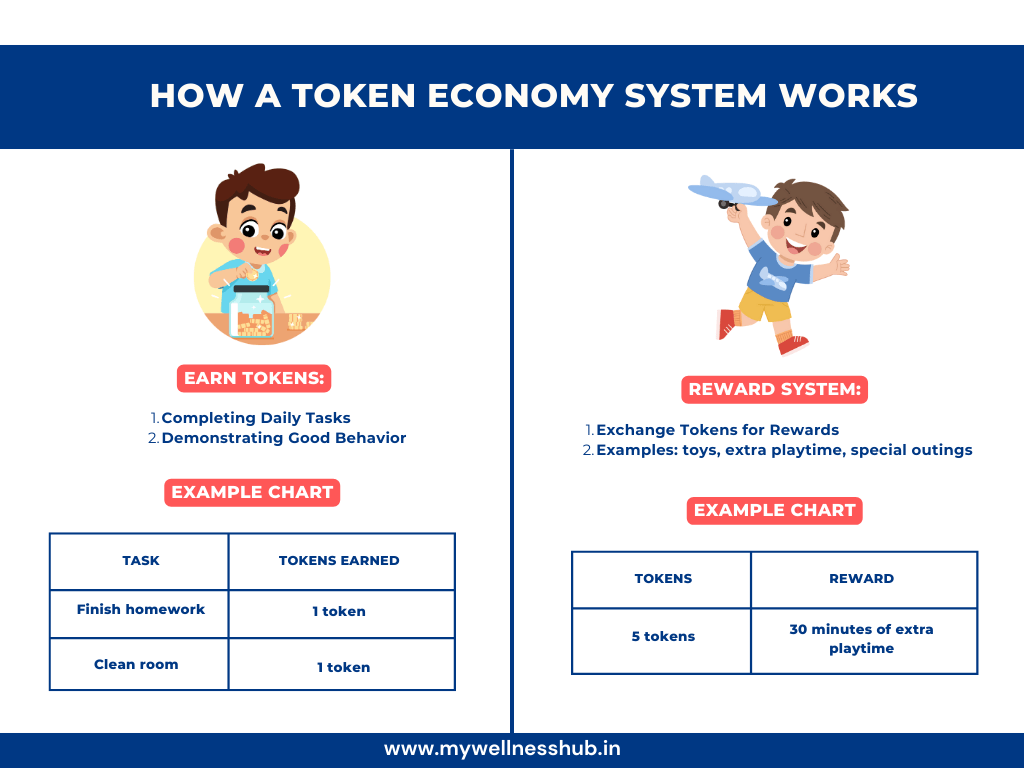
A token economy system is a structured method of reinforcement where children earn tokens for displaying desired behaviors. These tokens can be exchanged for rewards, making the process of earning and receiving rewards clear and motivating.
Explanation of Token Economy Systems
- Tokens can be anything from stickers to points that children collect.
- The system combines immediate rewards (tokens) with delayed rewards (items or privileges earned with tokens).
Examples:
- Star charts where children earn stars for good behavior, which they can later exchange for a toy or extra screen time.
- Point systems where points are earned for tasks like completing chores, which can be traded for a special outing.
Time-Outs
Time-outs are a common consequence for inappropriate behavior. When used effectively, they give children a chance to calm down and reflect on their actions.
Effective Use of Time-Outs as a Consequence
- Time-outs should be brief and immediate, occurring right after the unwanted behavior.
- The goal is to remove the child from a stimulating environment to help them regain control.
Tips for Implementing Time-Outs
- Clearly explain the reason for the time-out to the child.
- Ensure the time-out area is quiet and free from distractions.
- Use a timer to keep track of the duration, typically one minute per year of age.
Comparison of Behavioral Therapy Techniques
| Technique | Description | Examples |
|---|---|---|
| Setting Goals | Establishing clear, specific, and achievable objectives for the child to work towards. | Completing homework, sharing toys |
| Positive Reinforcement | Providing rewards and positive feedback to encourage desired behaviors. | Praise such as “Great job!”, extra playtime, small treats like stickers or tokens |
| Consistent Consequences | Applying consistent responses to unwanted behaviors to help the child understand the connection between actions and outcomes. | Time-outs, loss of privileges such as screen time or favorite activities |
| Token Economy | Implementing a system where children earn tokens for exhibiting positive behaviors, which can be exchanged for rewards. | Star charts where stars are earned for good behavior, point systems where points accumulate towards rewards like toys or outings |
| Time-Outs | Using short breaks from stimulating environments to help children calm down and reflect on their behavior. | A designated quiet time or space where the child can sit alone for a few minutes |
Role of Parents in Behavioral Therapy
Importance of Parent Involvement
Parents play a crucial role in the success of behavioral therapy for children with ADHD. Your involvement can make a significant difference in how effectively your child learns and applies new skills. As the primary caregivers, parents are in the best position to implement and reinforce behavioral strategies consistently, providing the structure and support their children need to thrive.
Why is Parent Involvement Important?
- Consistency: Children with ADHD benefit from consistent routines and responses. Parents can ensure that strategies are applied uniformly at home.
- Support: Parental support helps children feel secure and understood, which can boost their confidence and willingness to engage in therapy.
- Monitoring Progress: Parents can closely monitor their child’s behavior and progress, making necessary adjustments to the therapy plan in collaboration with professionals.
Description of Parent Training Programs
Parent training programs are designed to equip parents with the skills and knowledge needed to effectively support their child’s behavioral therapy. These programs typically include sessions with a therapist who provides guidance on how to implement strategies at home.
What Do Parent Training Programs Involve?
- Educational Sessions: Parents learn about ADHD, its symptoms, and how it affects their child’s behavior.
- Behavioral Strategies: Training on specific techniques such as positive reinforcement, setting clear goals, and consistent consequences.
- Practical Exercises: Parents practice implementing strategies in real-life scenarios, often with role-playing exercises.
- Support and Feedback: Regular sessions with a therapist to discuss challenges, receive feedback, and adjust strategies as needed.
Tips for Parents on Staying Consistent and Managing Stress
Consistency and stress management are key to effectively supporting a child with ADHD. Here are some practical tips for parents:
- Establish Routines
- Create a daily schedule for your child and stick to it as much as possible. Consistent routines help children with ADHD know what to expect and reduce anxiety.
- Use Visual Aids
- Visual schedules, checklists, and charts can help your child stay on track and understand what’s expected of them.
- Stay Positive
- Focus on positive reinforcement. Celebrate small successes to keep your child motivated.
- Take Care of Yourself
- Managing a child with ADHD can be challenging. Make sure to take time for self-care. Practice stress-relief techniques such as deep breathing, exercise, or hobbies.
- Seek Support
- Join support groups or parenting classes. Connecting with other parents who understand your challenges can provide valuable advice and emotional support.
- Communicate with Educators
- Work closely with your child’s teachers to ensure that strategies used at home are reinforced at school. Consistent communication can help track progress and address any issues that arise.
School-Based Behavioral Interventions
Implementation of Behavioral Therapy in Schools
Behavioral therapy isn’t confined to the home environment; it plays a crucial role in schools as well. Implementing behavioral therapy techniques in the school setting helps children with ADHD manage their symptoms and perform better academically and socially. Schools can provide a structured environment where positive behaviors are encouraged and reinforced consistently throughout the day.
How Schools Implement Behavioral Therapy:
- Behavioral Plans: Schools often develop individualized behavioral plans for students with ADHD. These plans outline specific goals and strategies to help the child succeed.
- Teacher Training: Educators receive training on ADHD and effective behavioral strategies to support students in the classroom.
- Regular Monitoring: Teachers monitor the child’s behavior and academic performance, adjusting strategies as needed to ensure continued progress.
Techniques like the Daily Report Card
One effective technique used in schools is the Daily Report Card (DRC). This tool helps track a child’s behavior and academic performance on a daily basis, providing immediate feedback and reinforcement.
How the Daily Report Card Works:
- Set Specific Goals: Teachers and parents collaborate to set specific, measurable goals for the child. These might include staying seated during class, completing assignments, or interacting positively with peers.
- Daily Tracking: The teacher monitors the child’s behavior and performance throughout the day, noting successes and areas for improvement.
- Feedback and Rewards: At the end of the day, the report card is sent home. Parents review it with the child, providing praise for positive behaviors and discussing ways to improve on any challenges. Rewards can be given for meeting goals, such as extra playtime or a favorite activity.
Importance of Collaboration Between Parents and Teachers
For behavioral therapy to be most effective, a strong partnership between parents and teachers is essential. Consistency across home and school environments helps reinforce positive behaviors and ensures that the child receives a unified message about expectations and consequences.
Why Collaboration is Key:
- Unified Approach: When parents and teachers use the same strategies and language, it helps the child understand and internalize behavioral expectations.
- Regular Communication: Frequent communication between parents and teachers allows for real-time adjustments to behavioral plans and strategies. This can include weekly check-ins or using communication tools like apps or notebooks.
- Shared Goals: Both parents and teachers work towards common goals, supporting the child’s overall development and success.
Additional Tips for Managing ADHD at Home
Create a Structured Routine
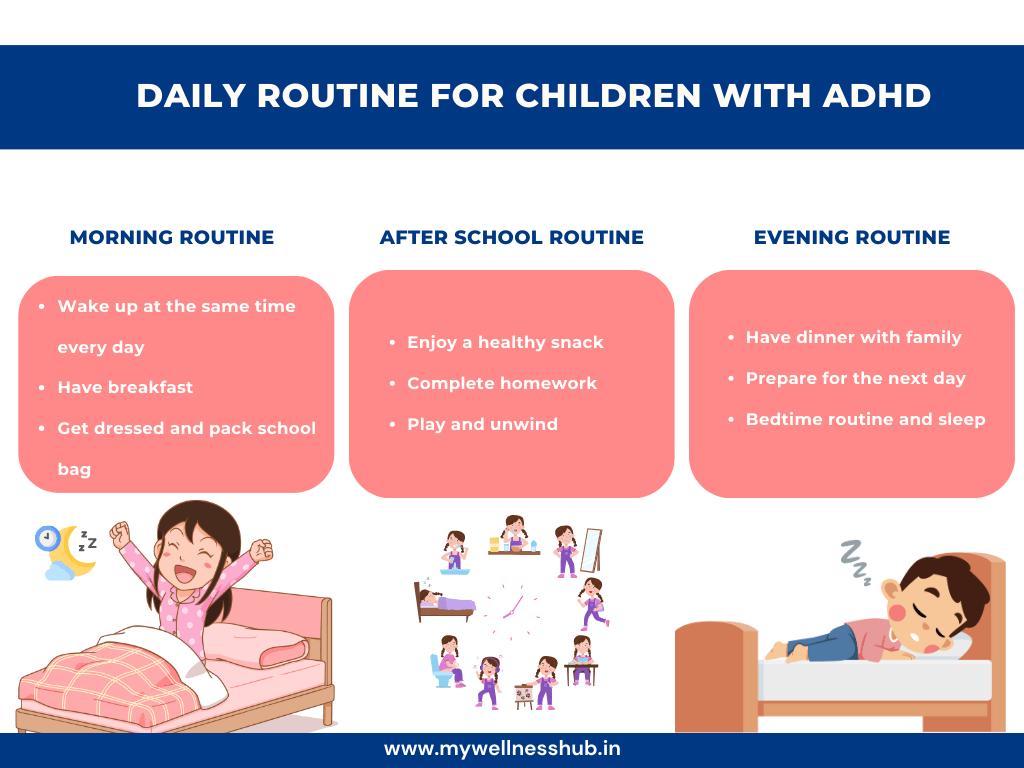
Establishing a consistent daily schedule is crucial for children with ADHD. A structured routine helps them know what to expect, reducing anxiety and improving their ability to manage time and tasks.
Importance of a Consistent Daily Schedule
- Predictability: A predictable routine helps children feel more secure and in control.
- Time Management: It teaches children how to allocate time for different activities, reducing last-minute stress.
Examples of Routines for Different Times of the Day
- Morning Routine: Wake up at the same time each day, get dressed, have breakfast, and prepare for school.
- After School Routine: Set aside time for a snack, homework, and play.
- Evening Routine: Dinner, family time, prepare for the next day, and a consistent bedtime.
Reduce Distractions
Minimizing distractions at home can significantly improve a child’s focus and productivity, especially when they are doing homework or other tasks that require concentration.
Strategies for Minimizing Distractions at Home
- Limit Screen Time: Set specific times for watching TV or playing video games.
- Quiet Zones: Designate a quiet area for studying and homework.
Tips for Creating Quiet Study Spaces
- Comfortable Workspace: Ensure the study area has a comfortable chair and good lighting.
- Organized Environment: Keep the space free of clutter and distractions like toys and electronic devices.
Organize the Environment
Keeping the home organized can help children with ADHD stay focused and reduce the stress associated with lost or misplaced items.
Importance of Keeping the Home Organized
- Reduces Overwhelm: An organized environment helps children feel more in control and less overwhelmed.
- Improves Focus: A tidy space reduces distractions and makes it easier to concentrate on tasks.
Tips for Organizing School Supplies, Toys, and Clothes
- Label Storage Areas: Use labels to indicate where items belong.
- Daily Tidying: Encourage your child to spend a few minutes each day tidying up their space.
- Accessible Storage: Ensure that frequently used items are easily accessible and stored at child-friendly heights.
Use Checklists and Planners
Checklists and planners are valuable tools for helping children with ADHD stay on task and manage their responsibilities effectively.
Benefits of Checklists and Planners
- Visual Reminders: They provide visual cues to help children remember tasks and deadlines.
- Track Progress: Children can see their progress as they check off completed tasks, which can be very motivating.
Tips for Breaking Tasks into Smaller Steps and Setting Deadlines
- Break Down Tasks: Divide larger tasks into smaller, manageable steps. For example, instead of “do homework,” break it down into “complete math problems” and “write English essay.”
- Set Clear Deadlines: Assign specific deadlines for each task and use reminders to keep track of them.
- Use Color Coding: Color coding different tasks or subjects can make the planner more engaging and easier to use.
Daily Schedule Example
| Time | Activity | Details |
|---|---|---|
| 7:00 AM | Wake up and get dressed | Encourage a consistent wake-up time to start the day on the right foot. This helps establish a stable routine for your child. |
| 7:30 AM | Breakfast | A nutritious breakfast to fuel your child’s day. Consider involving them in simple breakfast preparation to build independence. |
| 8:00 AM | School preparation | Ensure school bags are packed, and all necessary items (like homework and lunch) are ready. A checklist can be handy to avoid last-minute rush. |
| 3:30 PM | Snack | Provide a healthy snack to recharge after school. This can be a good time to chat about their day in a relaxed environment. |
| 4:00 PM | Homework | Set a specific time for homework to instill discipline and focus. Create a quiet, organized workspace to minimize distractions. |
| 5:00 PM | Playtime | Allow time for physical activity or free play to help your child unwind and expend energy. This can include outdoor activities or favorite games. |
| 6:30 PM | Dinner | Family dinner time to discuss the day and enjoy a meal together. Try to keep this time device-free to encourage conversation. |
| 7:00 PM | Family time | Engage in a family activity like a board game, reading together, or a short walk. This helps strengthen family bonds and provides relaxation. |
| 8:00 PM | Prepare for bed | Establish a calming bedtime routine such as bathing, brushing teeth, and reading a book. This signals to your child that it’s time to wind down. |
| 8:30 PM | Bedtime | Consistent bedtime to ensure your child gets enough sleep. Adequate rest is crucial for managing ADHD symptoms effectively. |
Conclusion
Incorporating behavioral therapy into your child’s routine is a transformative approach to managing ADHD effectively. This method equips children with the necessary tools for self-regulation, enhances their ability to interact socially, and improves academic performance. At Wellness Hub, we are committed to supporting families through this journey with comprehensive resources and expert guidance. Embrace behavioral therapy to empower your child with ADHD to navigate their world more successfully, fostering a positive and supportive environment that cultivates growth and long-term success.
Frequently Asked Questions:
1. What are the best behavioral therapy techniques for children with ADHD?
Behavioral therapy techniques that work well for children with ADHD include setting specific, achievable goals, using positive reinforcement, applying consistent consequences, implementing token economy systems, and using time-outs effectively. These methods help children learn self-control, improve their behavior, and achieve academic and social success.
2. How does behavioral therapy help children with ADHD?
Behavioral therapy helps children with ADHD by teaching them practical skills to manage their behavior. It focuses on changing specific actions through reinforcement strategies, providing children with tools to control impulsivity, improve focus, and reduce hyperactivity. These skills offer long-term benefits and help children succeed in various settings.
3. Can behavioral therapy improve ADHD symptoms in kids?
Yes, behavioral therapy can significantly improve ADHD symptoms in children. By consistently applying behavioral techniques, children learn to manage their symptoms better, leading to improved behavior, better social interactions, and enhanced academic performance.
4. What is the role of behavioral therapy in managing ADHD in children?
Behavioral therapy plays a crucial role in managing ADHD in children. It provides structured techniques and strategies that help children develop self-control, improve focus, and reduce impulsivity. It also supports parents and teachers in creating a consistent and supportive environment, enhancing the effectiveness of the therapy.
5. How effective is behavioral therapy compared to medication for children with ADHD?
Behavioral therapy can be as effective as medication for young children with ADHD, especially when used as the first line of treatment. While medication can help control symptoms, behavioral therapy teaches children long-lasting skills to manage their behavior. Combining both approaches can provide the most comprehensive support for children with ADHD.
6. Why is parent involvement important in behavioral therapy for ADHD?
Parent involvement is crucial in behavioral therapy for ADHD because parents provide consistency and support in implementing behavioral strategies at home. Their active participation ensures that children receive reinforcement and guidance in various settings, enhancing the effectiveness of the therapy.
7. How can schools implement behavioral therapy for children with ADHD?
Schools can implement behavioral therapy by developing individualized behavioral plans, providing teacher training on ADHD strategies, and using tools like the Daily Report Card. Collaboration between parents and teachers is essential to create a consistent and supportive environment for the child.
8. What additional tips can help manage ADHD at home?
Additional tips for managing ADHD at home include creating a structured routine, minimizing distractions, keeping the home organized, and using checklists and planners. These strategies help children stay focused, manage their time, and reduce stress.
About Author:
Lasya Vooturi
Clinical Psychologist and Behavioral Therapist
Lasya holds a Professional Diploma in Clinical Psychology from Amity University, where she deepened her understanding of psychological principles from March 2023 to March 2024. With over a year of dedicated experience as a Behavioral Therapist, Lasya has honed her skills in applying effective therapy techniques tailored to individual needs. Fluent in Telugu, Hindi, and English, she is adept at connecting with a diverse range of clients, ensuring comprehensive communication and understanding. Lasya’s approach is grounded in empathy and scientific rigor, making her a trusted ally in navigating mental health challenges.
Book your Free Consultation Today
Parent/Caregiver Info:
Client’s Details:
* Error Message
